Control cables—such as those used for throttle control, heater adjustments, and air flow routing—are flexible linkages designed to transmit force from the dashboard to remote components. Over time, these cables can seize or their terminals can break due to wear and age. Each cable has a specific length and termination style, making exact replacements difficult to source.
In my case, the air flow control cable—the one responsible for switching between fresh air intake and cabin recirculation—became increasingly stiff until it eventually snapped. The cable’s termination featured a soft metal stub that connected to a slider on the control panel. Due to excessive friction within the cable, the stub eventually broke off.
Accessing the cable beneath the center console is a messy and time-consuming task. It involves removing the center console panel, the transmission shift enclosure, and a number of wiring harnesses and panel mounts along the way.
The other end of the cable connects to a baffle at the air intake port, located above the glove compartment. Accessing it requires removing the entire glove compartment assembly.
The original connector is made of a soft metal—similar to tin or solder—that melts easily with a propane torch. Rather than attempting to recreate the same type of connector, I opted for a more practical solution: I spliced a copper wire to the cable by crimping both into a small metal tube, creating a strong and functional connection.
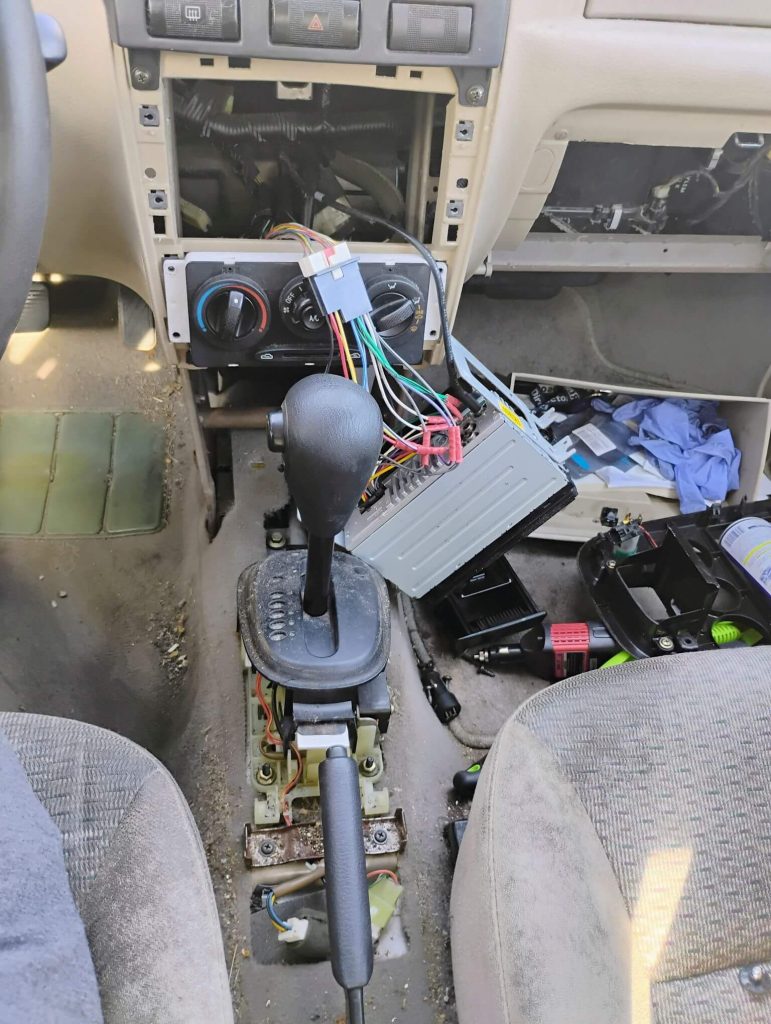
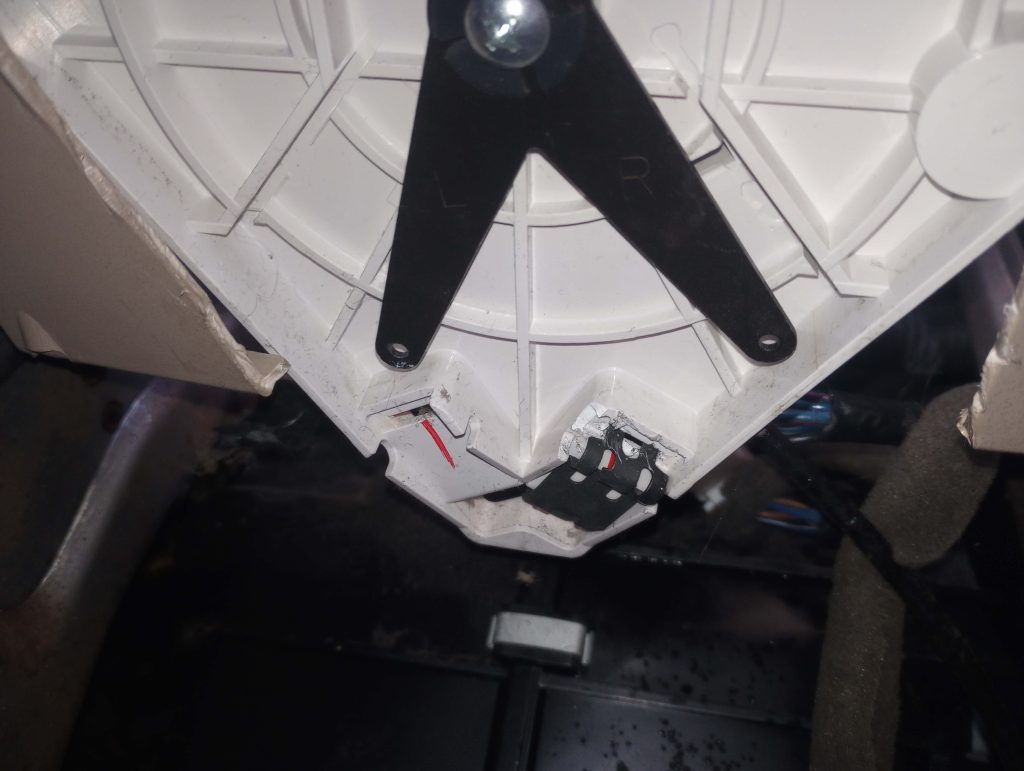

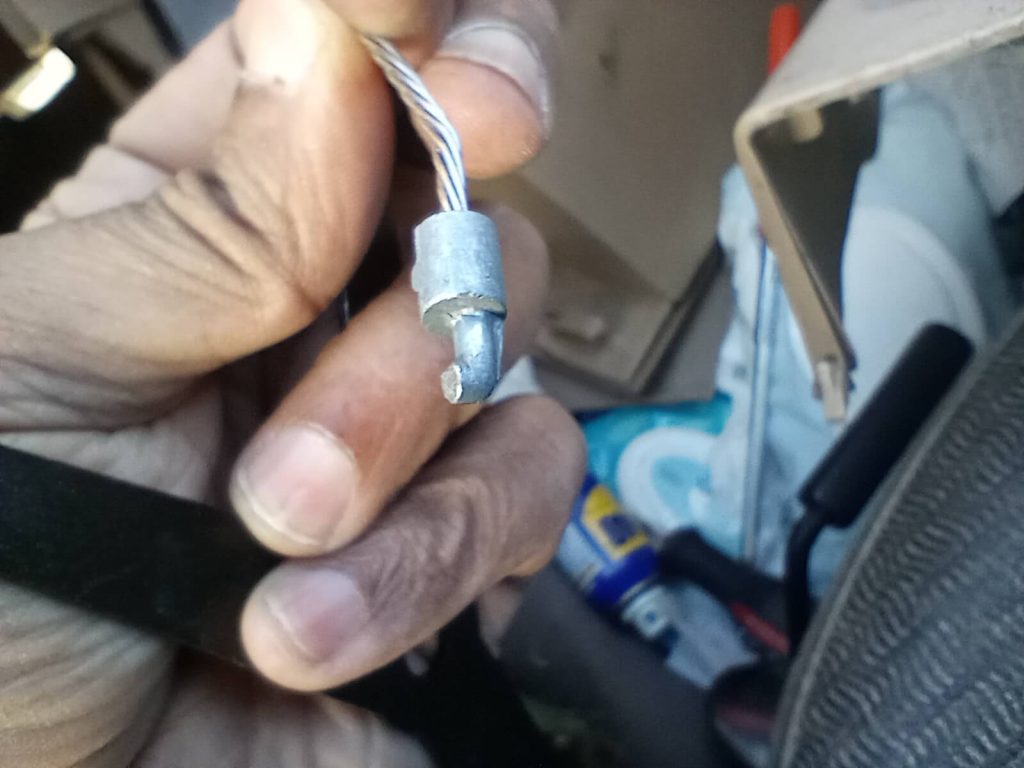
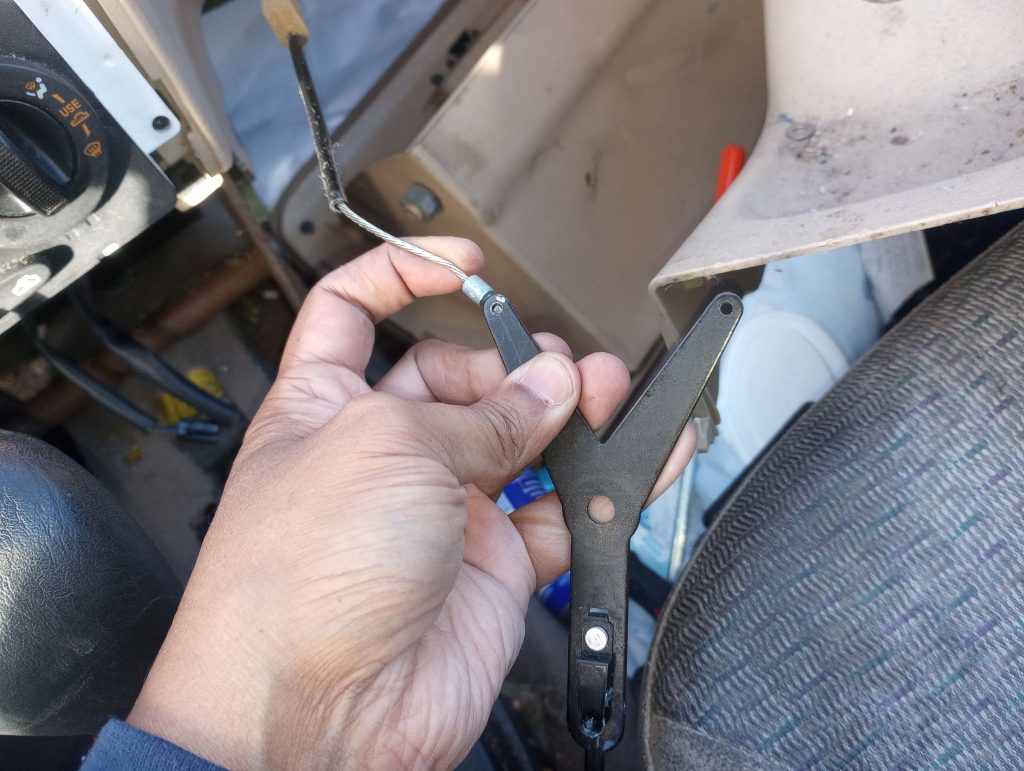
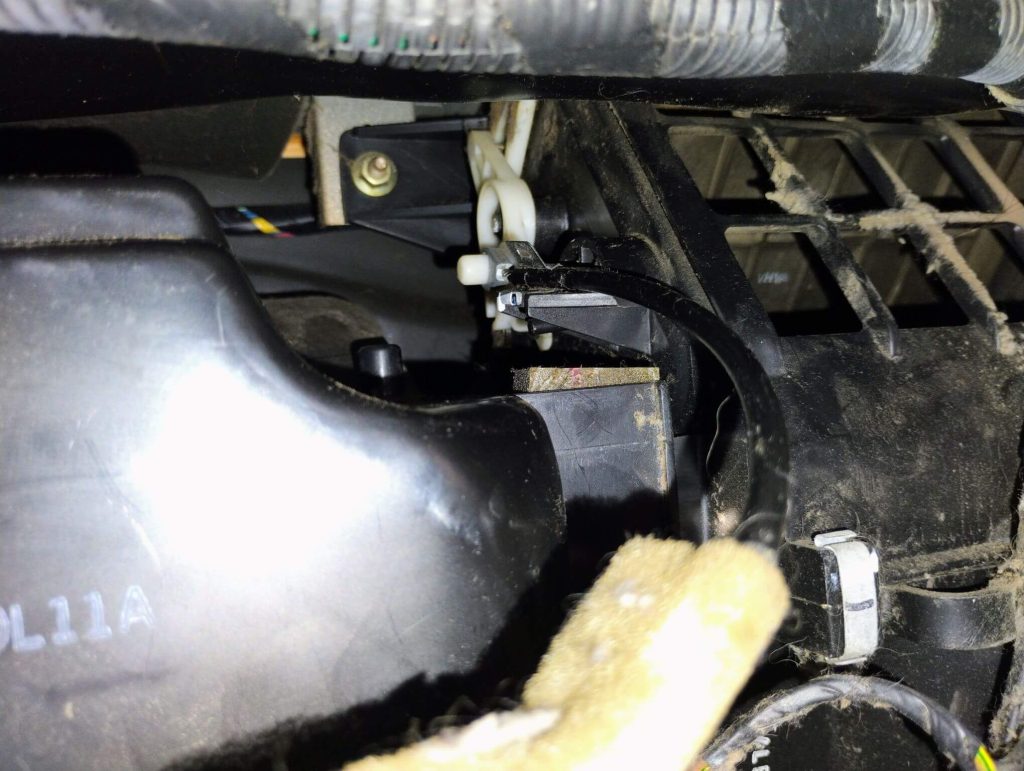

Leave a Reply